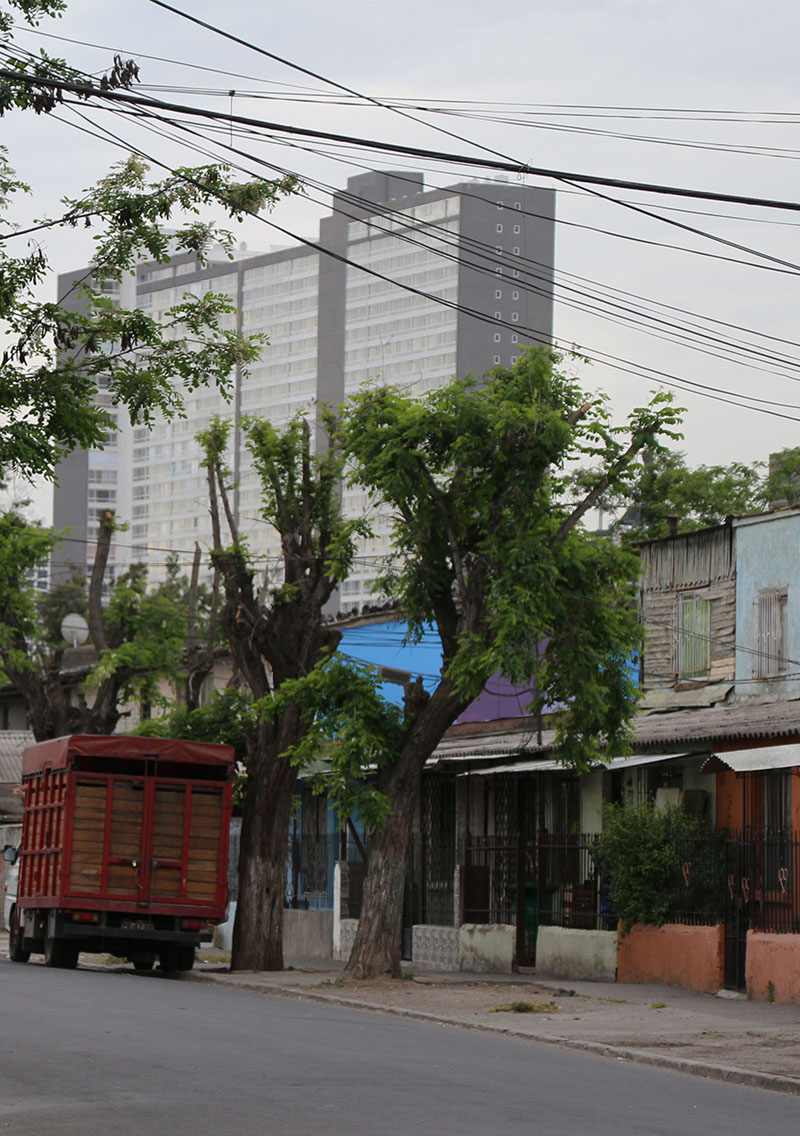Downloads
DOI:
https://doi.org/10.7480/rius.5.3990Abstract
The extension of Santiago’s metro line towards pericentral neighbouhods of social housing in 9x18 lots entails a process of densification and gentrification with the challenge of planning urban regeneration with territorial equity and social integration principles. This requires private/public management and investment at national, district and neighbourhood scale, that approaches to the neighbourhood improvement with maximum standards and high-quality densification that guarantee the permanence of current residents. In this chapter, measures for the development of public space and sustainable mobility are proposed, as well for the rehabilitation and construction of housing for homeowners, extended-households and new residents.
How to Cite
Published
Issue
Section
License
Copyright (c) 2019 María José Castillo, Sebastián Gray

This work is licensed under a Creative Commons Attribution 4.0 International License.
References
Castillo María José (2004). “Renovación de las poblaciones mediante la radicación de allegados: una alternativa a la expansión de Santiago de Chile”, Informes de la Construcción Vol. 56 Nº 491: OTRAS REA- LIDADES, OTRAS CONSTRUCCIONES, Consejo Superior de Investigaciones Científicas, Madrid, España, mayo-junio, p. 7-17.
Castillo María José (2012). “Gestión y autogestión de los pobladores, potencial de innovación para la política habitacional”, en FUNDACIÓN SUPERACIÓN DE LA POBREZA (2012). Tesis País 2011: Piensa un país sin pobreza, Santiago, p. 36-67.
Castillo María José (2013). “Producción y gestión habitacional de los pobladores. Articulación con la política de vivienda y barrio. Trayectoria y problemática actual”, tesis doctoral Universidad Politécnica de Madrid.
De Manuel Jerez, Esteban y López Medina, José María (2017). “Dinamizar la regeneración urbana desde la escala barrial: aprendizajes y transferencias del proyecto Barrios en Transición”, Ciudades N° 20, p. 21-44.
Díaz Parra Ibán (2016). “Política urbana y cambios sociodemográficos en el centro urbano de la Ciudad de México. ¿Gentrificación o reasentamiento?”, Territorios N° 35, p. 127-148.
Rosa Jiménez Carlos [et al.] (2016). “Cooperativas Vecinales. Una aproximación a la gestión colaborativa en rehabilitación y conservación de barriadas”, WPS Review International on Sustainable Housing and Urban Renewal (RI-SHUR), Vol.1 N° 3, p. 7-21.
Vergara Francisco, Palmer Montserrat (1990). “El Lote 9 x 18 en la encrucijada habitacional de hoy”, Facultad de Arquitectura y Bellas Artes, Pontificia Universidad Católica de Chile, Editorial Universitaria, Santiago, Chile.
Vergara Francisco, Palmer Montserrat (1995). “Santiago y sus periferias populares. El Lote 9x18m. y el trabajo inconcluso de sus barrios”; en Bannen Pedro (Ed.) (1995). Santiago de Chile: Quince escritos y cien imágenes, Ediciones ARQ, Santiago, Chile, p. 139-147.




